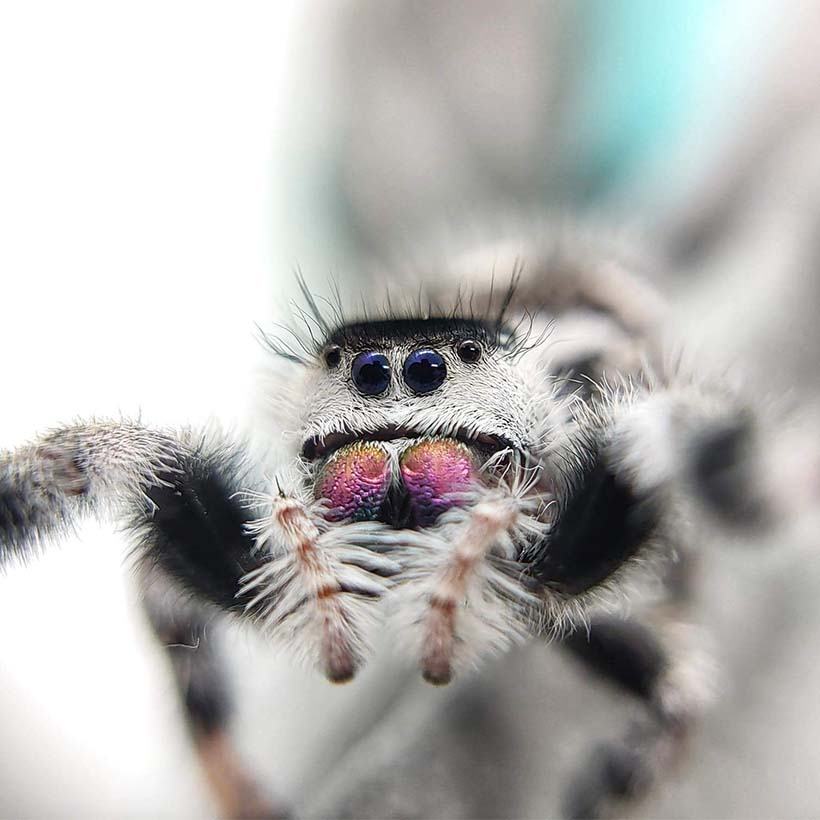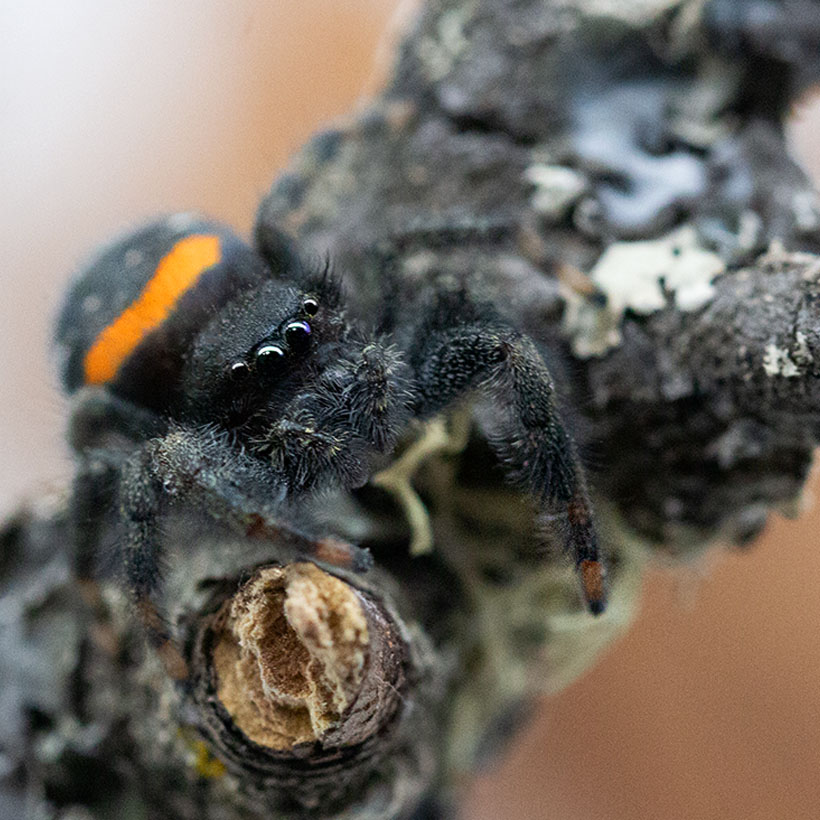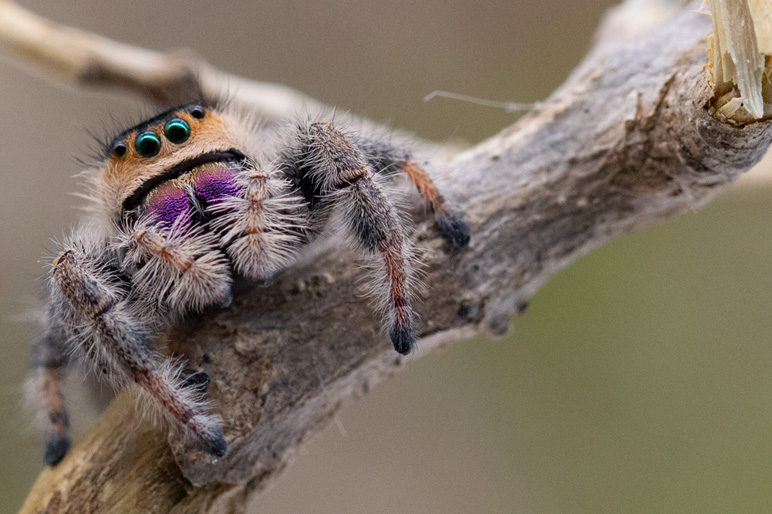Your cart is currently empty!

The fascination of jumping spiders: A look at the sexes and their coloration
From
on
Jumping spiders, the small and agile hunters, not only attract attention with their impressive behavior, but also with their unmistakable appearance. What particularly catches the eye is the striking difference in coloration between the sexes – an exciting detail that arouses curiosity.
We take a closer look at these fascinating aspects in this article.
The appearance of jumping spiders
Jumping spiders are known for their impressive visual perception, which they achieve thanks to their large and expressive eyes. This feature makes them effective hunters. However, the males and females of these spider species can look very different, which often leads to a preference for females among jumping spider enthusiasts.
Here are a few examples of the female Phidippus species:



Preference based on color
Many people find female jumping spiders more attractive, which is often due to their coloration. Females often present themselves in bright colors such as white or red, which are perceived as particularly appealing.
These colors stand in stark contrast to the often darker, sometimes black males. Black spiders cause unease or even fear in some interested parties, although male jumping spiders behave in exactly the same way as females.
The photos show examples of male Phidippus species:


The lottery of colors when buying
Anyone who decides to acquire a jumping spider is often faced with a kind of gamble when it comes to the sex and therefore the color of the animal.
With young jumping spiders, you can’t say for sure in advance what sex the spider you buy will be. This uncertainty makes the purchase an exciting moment, as the color of the animal is only determined after sexing.
One exception: Phidippus otiosus
The Phidippus otiosus is a particularly fascinating jumping spider species that is popular with jumping spider fans mainly due to its impressive coloration. Both sexes of this species are magnificently colored and offer a spectacular display of colors that is independent of sex.
The females are characterized by a distinctive white face, which can vary from a narrow stripe to a large spot. In contrast, the males always have a black head, which is also wider than that of the females and is a beautiful black and orange color. Their strong forelimbs, reminiscent of “gorilla arms”, emphasize their imposing appearance.
However, determining the sex of Phidippus otiosus is a challenge and can only be done reliably in the subadult stage, i.e. shortly before sexual maturity.


Conclusion
Jumping spiders are an excellent example of how visual beauty and behavior are closely linked in nature. The different perception of the sexes based on their color also reflects human aesthetic preferences and shows how subjective beauty can be.
In the world of the little hunters, however, all colors and shapes play their part in the ingenious game of evolution and survival strategies.
If you have any further questions, please leave them in the comments below the article.














Leave a Reply
You must be logged in to post a comment.